
This parent guide supports parents in helping their child at home with the 6th grade Science content.
- Subject:
- Science
- Material Type:
- Reference Material
- Vocabulary
- Author:
- Kelly Rawlston
- Letoria Lewis
- Date Added:
- 10/11/2022

This parent guide supports parents in helping their child at home with the 6th grade Science content.

This resource accompanies our Rethink 6th Grade Science course. It includes ideas for use, ways to support exceptional children, ways to extend learning, digital resources and tools, tips for supporting English Language Learners and students with visual and hearing impairments. There are also ideas for offline learning.
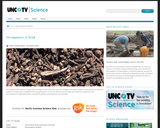
This multimedia resource, part of the NC Science Now series, describes how compost, or decaying organic material, is being used to bring new life to soil. Components of this resource include a video, related text articles, a photo gallery, and an interview with a biological and agricultural engineer who works with soil. Links to these components are provided on the page under the heading "UNC-TV Media."
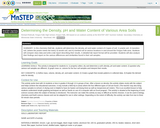
In this chemistry field lab, students will determine the density, pH and water content of 4 types of soil; 1) prairie soil, 2) transition soil, (where the prairie meets the trees) 3) woods soil, and 4) riverbed soil at various locations in and around the Fergus Falls area. Students will compare class data and write a lab report describing their results. A detailed lab report format will be provided. Students will also analyze their findings and report on the various differences and similarities found in their soil samples.
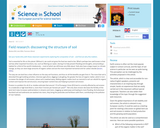
In this two-part lesson, students learn about soil structure and its organic matter content. In the first activity, students carry out a simple experiment to collect soil samples and test their stability to learn which types of soil are liekly to be more prone to erosion. In the second activity, students find out about the mineral composition of soil samples.

Students will investigate soils and observe how water moves through soil, how soil properties affect flow rate and water holding capacity. Students time the flow of water through different soils and measure the amount of water held in these soils. They will also observe the filtering ability of soils by noting the clarity of the water before and after it passes through the soil.
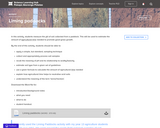
In this activity, students measure the pH of soil collected from a paddock (or other area). Then they will use a formula to estimate the amount of agricultural lime needed to promote good grass growth.

This lesson presents the story of the Dust Bowl and two activities, which simply demonstrate how the effects of farming practices in the early 20th Century contributed to severe soil erosion of a large portion of the North American grasslands.

Analyze the quantities and origins of basic mineral resources.
GeoInquiries are designed to be fast and easy-to-use instructional resources that incorporate advanced web mapping technology. Each 15-minute activity in a collection is intended to be presented by the instructor from a single computer/projector classroom arrangement. No installation, fees, or logins are necessary to use these materials and software.

I bribed my family with brownies to participate in an educational game night! In this video, we play a farm-themed word association game called Expression Connections taken from the Food, Land, and People curriculum. Try it out with your own family or classroom, and discover how many connections exist between you and the food that you eat!
Correlations to NC Essential Standards: Depends on how the lesson is adapted, but there is a lot of flexibility in this activity to be adapted to many standards in Science, Language Arts, and Social Studies.
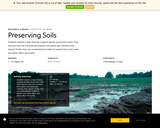
Students explore a map showing cropland density around the world. They discover how soil is formed and explore how plants get nutrients from topsoil. Finally, they use computational models to explore how wind, water, and plants affect soil quality.

This course was created by the Rethink Education Content Development Team. This course is aligned to the NC Standards for 6th Grade Science.

This course was created by the Rethink Education Content Development Team. This course is aligned to the NC Standards for 6th Grade Science.

This course was created by the Rethink Education Content Development Team and is aligned to the NC Standards for 6th Grade Science.
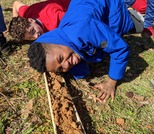
In this virtual resource, students will investigate the lithosphere, focusing specifically on conservation practices to improve soil quality. They will evaluate their school grounds, and sketch a plan to improve the soil health in their space.
The wakelet site features videos demonstrating hands-on activities for students to complete at school in small, socially-distanced settings. Activities may also be adapted for at-home learning. Some activities incorporate an outdoor component, acknowledging the need to balance screen time with green time to support mental health. Tips for taking your students outside can be found here: https://education.eol.org/cnc_materials/TipsForTeachingOutside.pdf
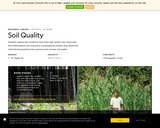
Students explore the conditions that make high-quality soils. Using data from field research and interactive computational models, they determine which farming practices best preserve and increase soil quality.

This resource is an article describing the importance of soil.
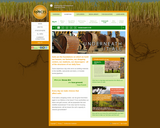
This tutorial human impacts on soil.